Atlantic mudskipper - Periophthalmus barbarus
Scientific name: Periophthalmus barbarus
Common name: Atlantic mudskipper
Family: Gobiidae
Usual size in fish tanks: 20 - 25 cm (7.87 - 9.84 inch)
014
Recommended pH range: 8 - 8.5
Recommended water hardness: 12 - 20°N (214.29 - 357.14ppm)
0°C 32°F30°C 86°F
Recommended temperature range: 25 - 30 °C (77 - 86°F)
The way how these fish reproduce: Spawning
Where the species comes from: Africa
Temperament to its own species: aggressive/territorial
Temperament toward other fish species: aggressive/territorial
Usual place in the tank: Top levels
Short description
The Atlantic mudskipper (Periophthalmus barbarus) is an amphibious goby from West African mangrove mudflats. It spends much of its time out of the water, perching and “walking” on pectoral fins, and defending intertidal territories. Keep it in a brackish paludarium with a broad, gently sloped “beach,” warm humid air under a tight lid, and only shallow water. Adults are highly territorial—plan for one male per territory or keep a single specimen.
Origin
Africa – West African coast from Senegal to Angola. Inhabits tidal creeks, mangrove margins, and mud banks exposed at low tide.
Food and feeding
Primarily an insectivore/carnivore taking crickets, small roaches, mealworms/earthworms, small shrimp and other intertidal invertebrates. You can train some individuals to take soft, sinking carnivore pellets or insect-based sticks (pre-soaked), but do not rely on flakes. Feed with feeding tongs on land and at the waterline; offer several small meals per day and remove leftovers.
Sexing
Males typically develop larger, more colorful dorsal fins and are bulkier when mature; females are smaller with shorter dorsals.
Breeding
In nature, males excavate a mud burrow with an internal air chamber where eggs adhere to the walls. The male guards and tends the clutch. Replicating tidal cycles, deep mud and stable air pockets makes home breeding very difficult; there are no reliable aquarium protocols for this species.
Lifespan
Typically 5–8 years with excellent husbandry; longer is possible in optimal paludaria.
Behavior & compatibility
Territorial and pugnacious toward conspecifics (especially males) and similar amphibious fishes. Best kept singly or as one male with 1–2 females only in very large, well-structured setups with visual barriers. Do not mix with delicate fish or small aquatic species—they may be harassed or eaten at the water’s edge.
Tank requirements
- Format: brackish paludarium with 50–70% land area; long footprint more important than height.
- Land: gently sloped fine sand/mud (can mix inert sand with a little marine mud); add mangrove-style roots/driftwood and flat perches.
- Water: shallow (≈10–25 cm) with brackish salinity around SG ~1.005–1.015 (≈5–20 g salt/L); hard, alkaline.
- Air & cover: tight-fitting lid to keep warm, humid air (near water temperature 25–30 °C). Seal cable gaps—excellent climbers/jumpers.
- Filtration: gentle flow with robust biofiltration; keep shoreline areas calm.
- Décor: multiple visual barriers and basking ledges; provide several burrowable zones to reduce fights.
- Escape-proof lid: Seal all gaps (cable holes, corners, feeding ports). Mudskippers climb glass and can push lids—use weight/clamps.
- Warm, humid air: Keep the air above the water warm and humid; avoid drafts. A dry lid gap can lead to desiccation if they crawl out.
- Handling: Avoid dry hands/nets. If absolutely necessary, use a soft, wet container or bag; their skin/eyes are easily damaged when dry.
- Intakes & edges: Cover filter intakes/overflows with mesh. Pad sharp edges near the shoreline and remove snag hazards.
- Startle-proofing: Dim room lights before tank lights on/off. Move slowly around the tank to reduce panic dashes.
- Feeding stations: Offer food on flat ledges near the waterline to keep strikes controlled and away from gaps.
Pictures
Bought by aqua-fish.net from jjphoto.dk.
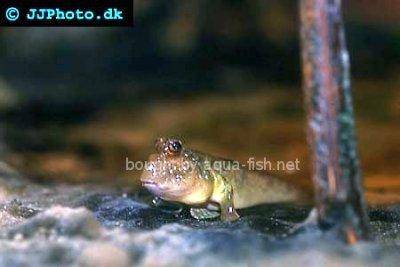





 Candy
Candy 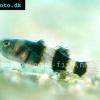 Goldenbanded
Goldenbanded 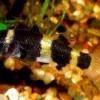 Golden
Golden 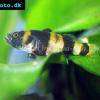 Bumblebee
Bumblebee 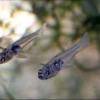 Glass
Glass 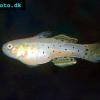 Goby
Goby